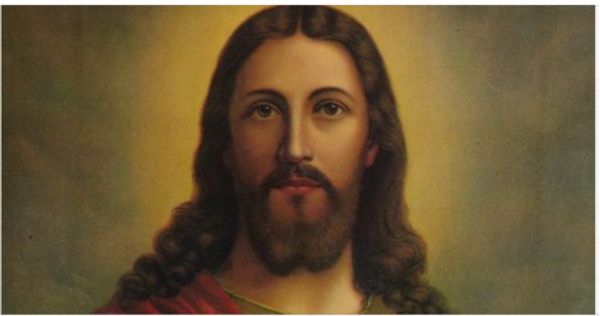
For centuries, scholars and historians have debated the physical appearance of Jesus Christ. Popularized images depict him as a tall, muscular European with long, blond hair and piercing blue eyes. However, most historians agree that Jesus, being a carpenter’s son from ancient Palestine, would have shared the physical traits of the local people – a shorter, stockier build and curly black hair.
Dutch photographer and digital artist Bas Uterwijk may have finally put an end to the debate. Using cutting-edge artificial intelligence technology, he employed Artbreeder’s machine learning features to create a stunningly realistic portrait of Jesus. Uterwijk’s depiction stands in stark contrast to Western art and ecclesiastical representations. He explains, “I have a background in Computer Generated images and Special Effects. The artificial intelligence software utilizes a neural network trained on thousands of human faces from photographs and paintings. I used it to create historical and fictional characters.”
Uterwijk combined various cultural depictions of Jesus, including Leonardo da Vinci’s “Salvator Mundi” and the Turin Shroud, tweaking the ethnicity to present a more convincing Middle-Eastern face. He also incorporated elements found in Fayum mummy portraits and adjusted the hair and beard to reflect a more historically accurate length and style for the time and region. The result is not a scientific exact likeness, but rather an artistic interpretation of what Jesus might have looked like.
According to biblical accounts, Jesus was born to a Jewish family in Bethlehem, raised there, and settled in Nazareth. While there is little detail about his physical appearance in the gospels, records of the clothes he wore suggest that he was around 5 feet 5 inches tall, which was average for men of his time. Likewise, historical evidence and ancient writings describe the people of Judea and Egypt as having dark olive skin, dark black hair, and brown eyes.
Dr. Joan Taylor, an expert in Christian origins, confirms that Jesus would have resembled a typical Jewish man of the first century. Contrary to traditional paintings, Jesus was not pale or European-looking. He had dark skin, shortish black hair, and a beard, and he wore sandals. Taylor explains, “He was a wanderer. He was on the streets. He accepted charity from strangers. He was with the poor. As he said, ‘Foxes have dens and birds have nests, but the Son of Man has no place to lay his head.’”
Forensic facial reconstruction specialist Richard Neave’s work further supports the findings. In 2001, Neave attempted to recreate the appearance of a Judean man from the first century, similar to Jesus, using an Israelite skull. The resulting likeness showcased a short, stocky man with dark hair, a clipped beard, and olive skin.
This historically accurate portrait challenges our preconceived notions of Jesus’ appearance and offers a compelling representation of the man who walked the streets, associated with the poor, and left a profound impact on the world. It reminds us that Jesus was not a distant figure but a part of his time and place, a Jewish man who defied societal expectations and devoted himself to spreading a message of compassion and love.
Please SHARE this enlightening article with your Family and Friends, and let us continue to uncover the truth about Jesus’ remarkable life.





